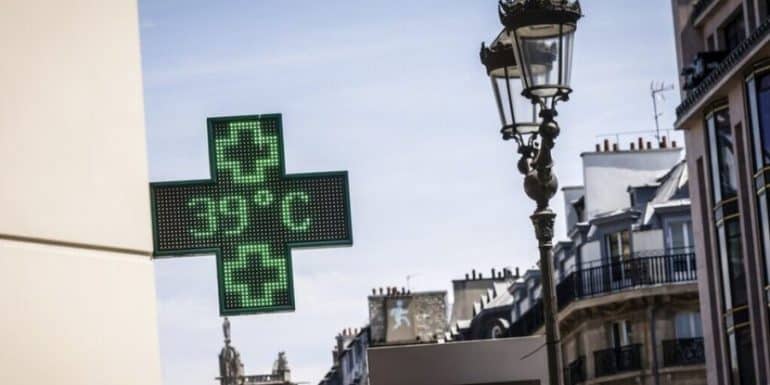Battered by a third heat wave in the middle of summer, which is intensifying in the south of the country, France is now fully plagued by drought after Paris and its suburbs were put on "vigilance" following July's driest month on record. has ever been recorded.
France is expected to record highs of 35C or higher tomorrow, Wednesday, with temperatures peaking at 39C or 40C in the south-west, according to the national weather service's forecast today.
Temperatures high enough to put 27 departments, out of 96 in Metropolitan France, on "orange alert for heat": from the department of Bas-Rhin (northeast) to Vaucluse (southeast) and Haute-Garonne (southwest). Most of these prefectures are located in the eastern part of the country.
This peak of heat "will continue on Thursday with a shift to the east" and is expected to be shorter in duration and intensity than the previous heat wave in mid-July, Météo-France said. However, the recurrence of peak heat unusually complicates the situation, putting the most vulnerable people and nature to the test.
Only a few days passed between this new peak and the July heat wave, which was followed by a first wave in June, unusually early.
"We are concerned by these constant repetitions of the heat wave" which "do not allow organizations to return to a normal function", explains Isabelle Bonmarin of France's national public health service (SPF).
"We expect an excess of mortality, mainly for those aged 75 and over", adds her colleague Robin Lagarig, clarifying that a "reckoning will be done in September".
These heat waves are also exacerbating a very severe drought sweeping the country, with Paris and its nearby departments having in turn been put on "drought alert".
July 2022 was the warmest July on record in France since records began in 1958-1959, and the second driest ever (after March 1961).
Cumulative rainfall was only 9,7 mm, an 84% deficit compared to normal levels.
Source: RES-EAP
